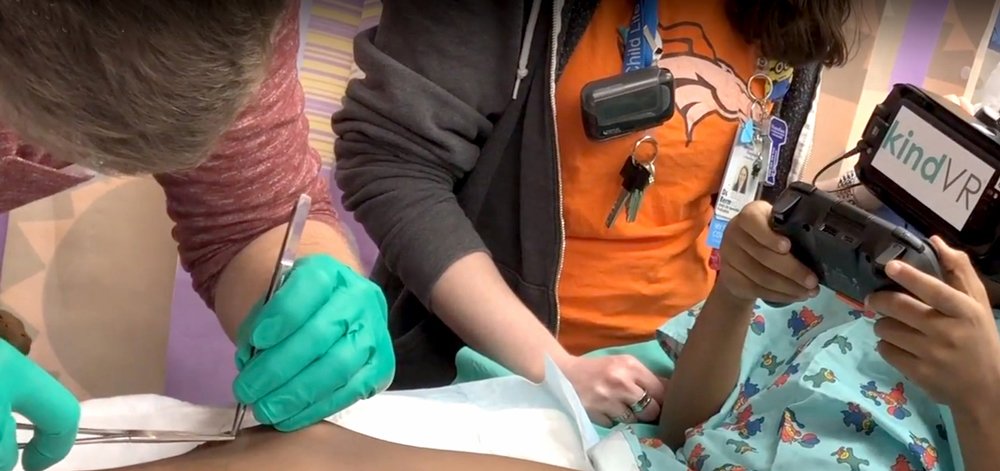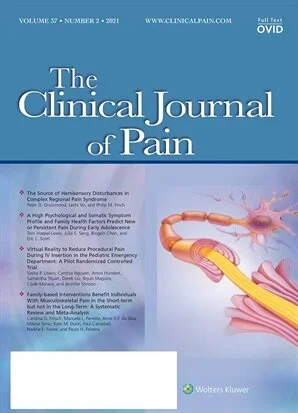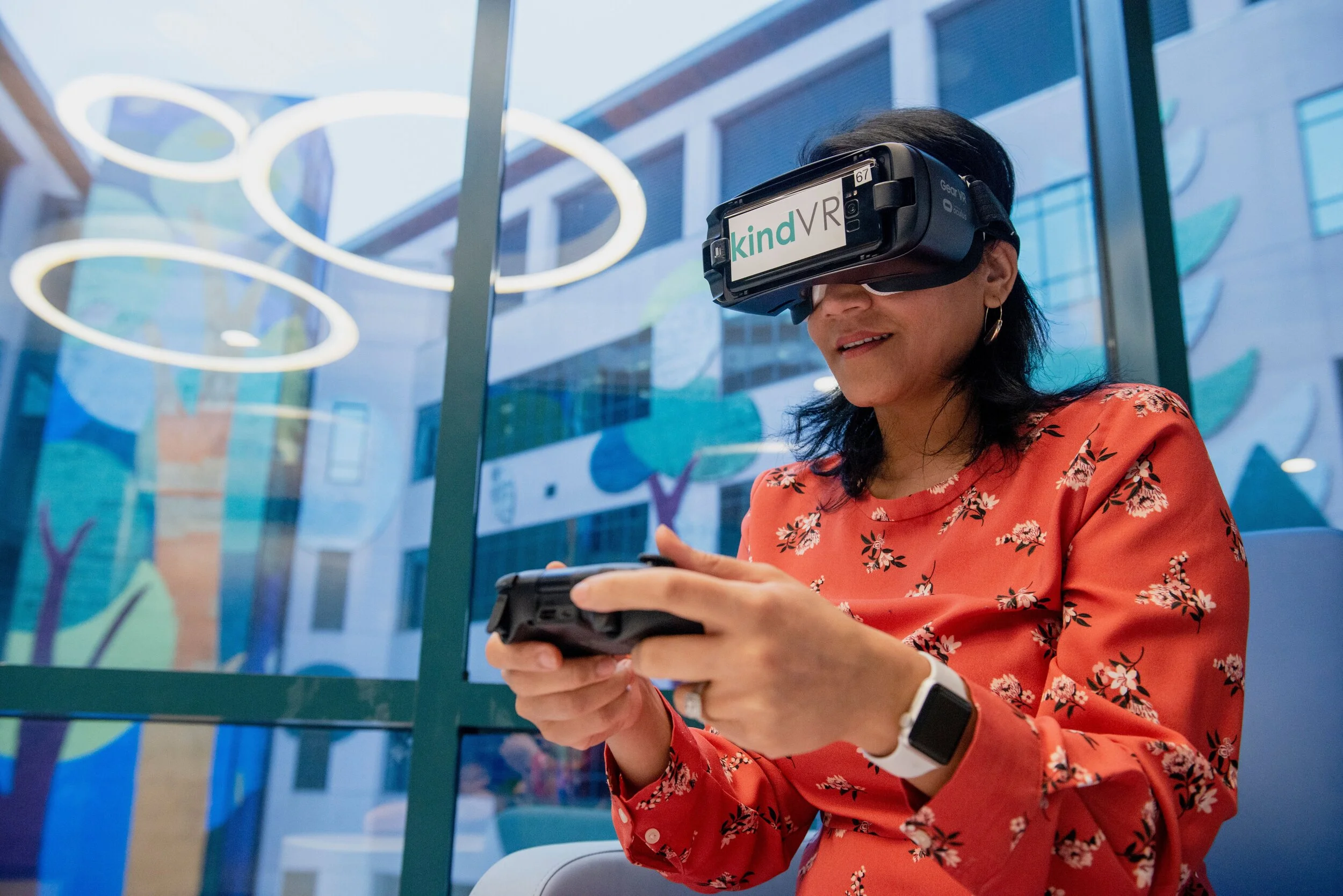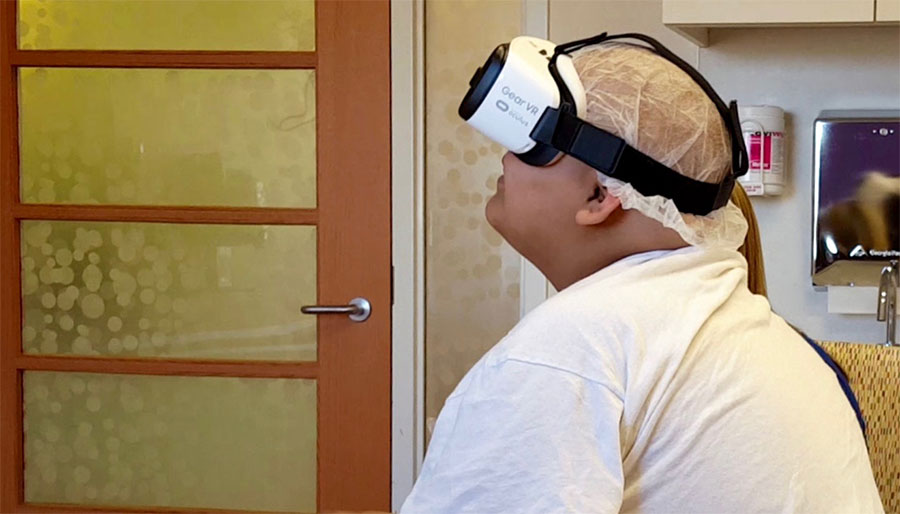Patients in a new St. Jude Children’s Research Hospital study will soon dive deep into the ocean for a marine experience alongside tropical fish, friendly seals and curious dolphins. While launching multi-colored bubbles at a variety of aquatic life, they’ll navigate an underwater terrain of sunken ruins and stone columns.
Swimsuits, scuba gear and beach towels won’t be necessary—the underwater journey is part of a new virtual reality experience designed to distract children with sickle cell disease who have acute pain crises.
People with sickle cell disease have red blood cells that are sickle-shaped and hard, making it difficult for their cells to move through blood vessels and deliver oxygen to body tissues. Pain crises are the recurring episodes that occur when normal blood flow is disrupted.
The pain is different for each individual. Some children get complete relief from routine pain medicines while others need more time or increased dosage before the pain subsides.
Three years ago, Doralina Anghelescu, MD, director of the hospital’s Pain Management Service, began a clinical trial to see if adding the drug gabapentin to the standard regimen would lessen acute pain from sickle cell crises more quickly or completely. The study is ongoing, but when presented with the opportunity of including virtual reality technology as a distraction tool, the researchers decided to try it.
The virtual reality project will include 76 patients—half will receive virtual reality sessions and the other half will receive standard treatment. St. Jude is partnering with the Memphis-based Methodist Comprehensive Sickle Cell Center on the clinical trial. This is the first study at St. Jude to use virtual reality, helping further position the institution as a leader in pain management for pediatric patients. (Read the Full Story on St. Jude Children's Research Hospital's website)






























